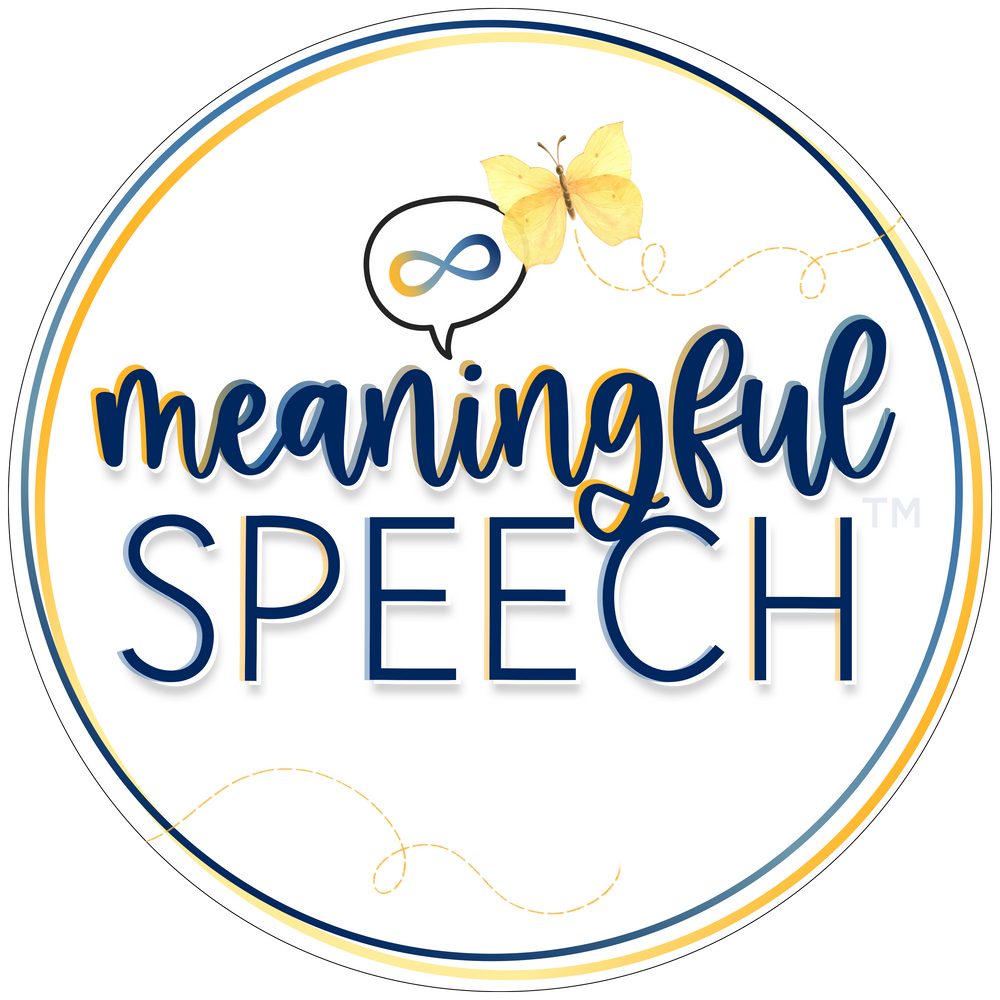Specific Goals for Gestalt Language Processors: Why should we write them?
Sep 13, 2023
We often are asked why we recommend writing specific goals for gestalt language processors if these goals may be passed on to clinicians who are not yet knowledgeable, are still learning about gestalt language development, or aren't NLA-trained clinicians.
What is the Natural Language Acquisition framework?
We have heard feedback that speech-language pathologists shouldn’t be writing “program specific goals”. First, let’s address what the Natural Language Acquisition framework is. It is NOT a program. The framework was first outlined in Marge Blanc’s book Natural Language Acquisition on the Autism Spectrum: The Journey from Echolalia to Self-Generated Language (2012). The framework is a detailed description of gestalt language development developed by Blanc based on years of her own clinical research as well as the pioneering research of Barry Prizant, Ann Peters and their colleagues.The framework provides us with a scoring system for the data we collect (language samples) as well as how we can appropriately support gestalt language processors.
Do you have to be NLA-trained to implement these goals?
No, you do not have to be trained through a course to implement NLA- focused goals and appropriately support a gestalt language processor. However, you should be knowledgeable or willing to start learning and accept resources. We want to make sure that we are using appropriate strategies to support a child’s language development. Different language development requires different language support. While some strategies will overlap, if we’re solely using strategies meant for analytic language processors with early stage gestalt language processors, it will hold them back in their language development and may leave them “stuck” in the early stages. Whereas, if we’re using strategies meant for gestalt language processors with analytic language processors they will take what they need from these language supports and use it to move through the stages of their language development.
How do NLA-focused goals differ from “traditional” or analytic language goals?
Traditional goals may rush objectives that are too advanced for gestalt language processors. They often focus on goals like expanding utterances, grammar, WH-questions, labeling. These goals are not appropriate for gestalt language processors in the early stages. Traditional goals often mention accuracy (e.g. “80% accuracy), adult-directed activities (e.g. “During structured activities”), and may include imitation or a level of prompting/cueing from the clinician (e.g. “Given visual cues”).
When supporting gestalt language processors, we want to use child-led activities. We do not prompt or cue language with gestalt language processors. We want to focus on naturally modeling language that is appropriate for the stage of language development the child is currently in. We want goals for gestalt language processors to look at the child’s spontaneous language. By writing all of this into our goals for gestalt language processors, it helps them be better supported, especially if the goal were to be passed onto someone who may or may not be knowledgeable about NLA and gestalt language development.
Goal writing for Gestalt Language Processors
Taking thorough language samples and understanding the stages is crucial. Goals/objectives are based on the stages. We need to find out the stage the child is mainly communicating in.
- In Stage 1, our goal is for the child to increase the amount and variety of mitigable (easy to mix and match or trim down in Stage 2) gestalts.
- In Stage 2, our goal is for the child to mitigate (mix and match) partial gestalts or trim down longer gestalts.
- In Stage 3, our goal is for the child to isolate single words and begin to combine single words into two-word combinations (noun + noun or noun + adjective).
- In Stages 4-6, we’re modeling grammar targets for the child (we’re not concerned about grammar at all in the earlier stages). We base these goals on the Developmental Sentence Types and Developmental Sentence Scoring which was created by Laura Lee. In stages 4-6 when a child is self-generating language we can also start to focus on “other” language goals like WH-questions (asking and answering), problem solving, narratives and higher level thinking skills.
Want to learn more in-depth information about how to support gestalt language processors?
- Consider taking the Meaningful Speech course to learn more about how your child or client processes language, how you can help support them from echolalia to self-generated (original flexible) language, child-led therapy, and neurodiversity-affirming practices.
- Consider taking our AAC + Gestalt Language Processing course. It will teach you how to identify, evaluate and support gestalt language processors who use AAC or who you think might benefit from AAC.
- Consider purchasing our GLP Handbook for Coaching and Education. This comprehensive resource was designed by Meaningful Speech team member Katie Arnold for clinicians and parents! The GLP Handbook is filled with tools to educate about and advocate for a Gestalt Language Processor in your life (or on your caseload).
- Consider taking one of Marge Blanc’s courses on Natural Language Acquisition or purchasing her book. Both can be found on her website: www.communicationdevelopmentcenter.com.
- Look for a speech-language pathologist (SLP) who "gets it" and can help you in supporting your child's language development. Check out our world-wide registry for SLPs who understand gestalt language processing and child-led therapy.
